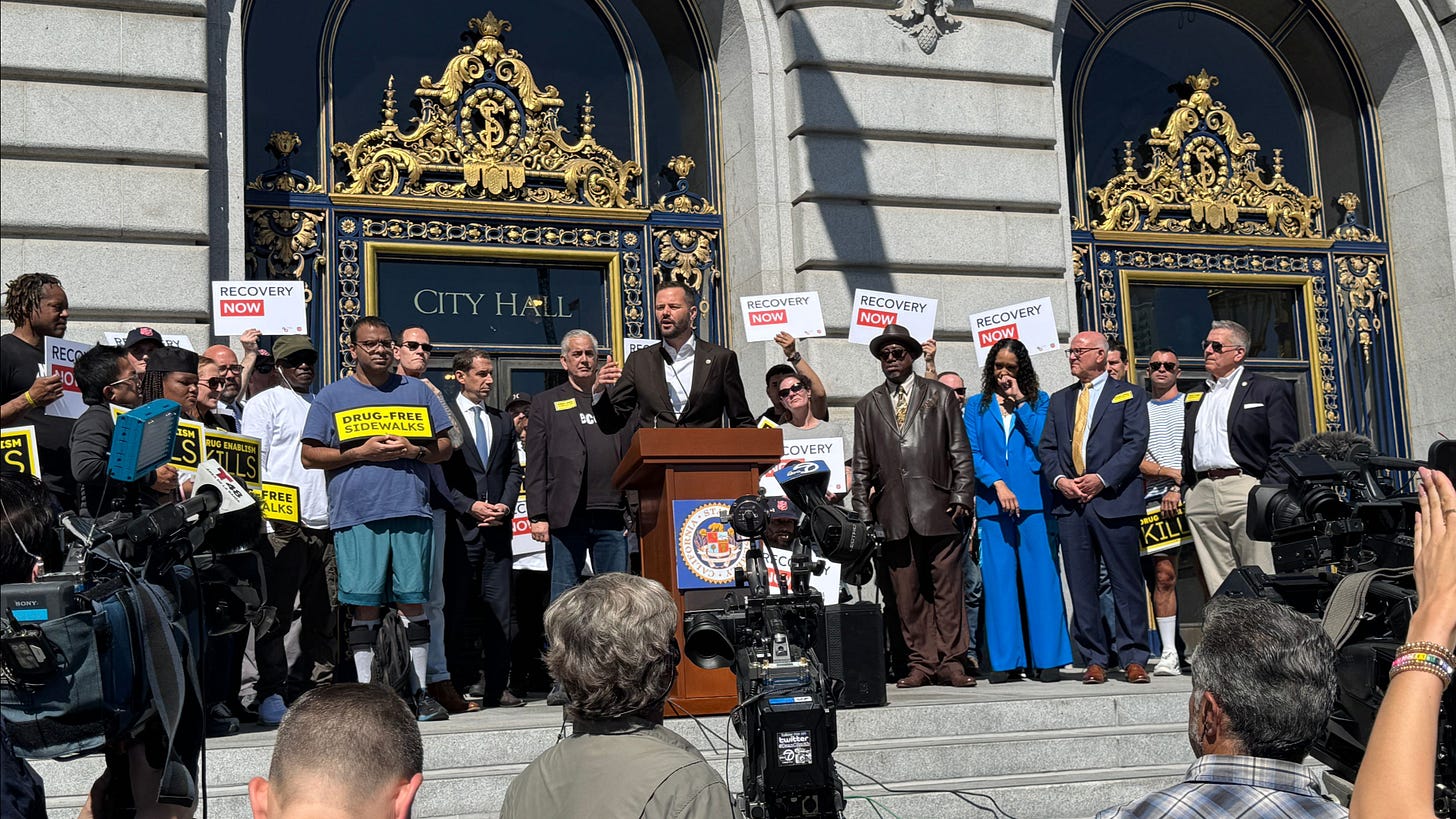The most important homelessness bill in California right now
AB 255 would be the first change in California's "Housing First" law since it was first adopted in 2016

Note: This post is adapted from an oped co-authored by myself and Steve Adami in Capitol Weekly.
Over the past decade California’s homeless residents have endured a catastrophic addiction epidemic that has claimed thousands of lives and spread despair in communities across the state. AB 255 by Assemblymember Matt Haney (D-San Francisco) is a commonsense reform to support addiction recovery and save lives and is the most important state homelessness bill currently in the legislature.
According to the Benioff Center for Homelessness and Housing at UCSF, homelessness and addiction are closely related, each worsening the conditions that lead to the other. An estimated 46 percent of homeless Californians—roughly 86,000 people—report substance use as “currently leading to health, legal, social, or financial problems.”
“Problems” is an understatement. An analysis in Alameda County found that homeless residents were three times more likely to die from chronic illness, 45 times more likely to be struck and killed by motor vehicles, 34 times more likely to be murdered, and 43 times more likely to die from drug or alcohol overdoses than housed residents. Between 2011 and 2020, the mortality rate of homeless Californians surged 238 percent, fueled mostly by a staggering 488 percent increase in overdose deaths. This is more than just a “problem”, it’s a humanitarian crisis of the highest order.
As it stands today, California state law is uniquely unsuited to tackling this crisis.
Current state law requires all permanent housing for homeless residents to allow onsite drug use, including illicit drugs, as a condition for receiving state funds. The law was intended to reduce barriers to keeping addicts housed, which it does, but it also inadvertently creates barriers to housing and sobriety for homeless addicts seeking recovery and who need and want drug-free environments. “People who want to get off drugs shouldn't be placed just in places where there's drug use” explained bill author Matt Haney at a rally for the bill in San Francisco. What’s especially maddening is that California supports transitional drug free housing, typically a one year program in a sober environment, to support addicts seeking recovery. But for addicts who graduate from these program who qualify for permanent supportive housing—typically because they have some other disability—it’s back to public housing where drug use is commonplace.
That’s where recovery housing comes in. Recovery housing is an evidence-based approach to addiction recovery that emphasizes choice—residents who want to pursue recovery—abstinence, and community support in case of relapse.
According to the Substance Abuse and Mental Health Service Administration, recovery housing is associated with decreased substance use, reduced likelihood of return to use, lower rates of incarceration, higher income, increased employment, and improved family relationships. An Obama-era policy brief from the U.S. Department of Housing and Urban Development describes recovery housing as fulfilling “a unique and specific role within a community’s homelessness services” that “should be a component of any Continuum of Care that needs this type of resource to prevent and end homelessness.”
Recovery housing is also highly in demand. A 2023 survey by RAND found that 35 percent of unsheltered Los Angelenos wanted drug-free housing, and a separate survey of over 200 formerly homeless residents of permanent supportive housing in San Francisco found that 71 percent would prefer to live in drug-free housing.
AB 255 would allow local governments to tap into state homeless programs to support building recovery housing in their communities, expanding the tools available to local governments to meet the diverse needs of homeless individuals. Eligible projects would have to meet NARR standards and temporary relapse must be treated with support to help residents stay on track.
AB 255 is a retry of a similar bill from last year, AB 2893 (Ward/Haney), that was held in the Senate Appropriations committee, but already AB 255 is looking like it’s in a much stronger position. AB255 has received much more visibility this year than AB 2893, including a rally and press conference with virtually the entire local political leadership of San Francisco (pictured above), and a glowing front page story in the Los Angeles Times. The bill is currently headed to a floor vote in the Assembly.
The twin crises of homelessness and addiction have made California a symbol for overdose and despair. Let’s become a symbol for recovery and hope instead. AB 255 will help California correct course with an evidence-based approach that homeless residents want. The legislature should pass it.


